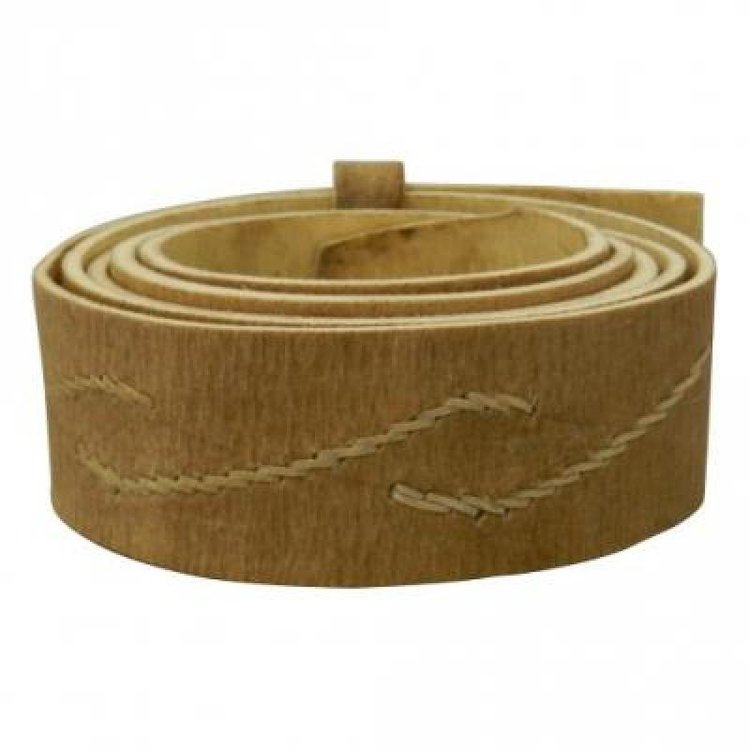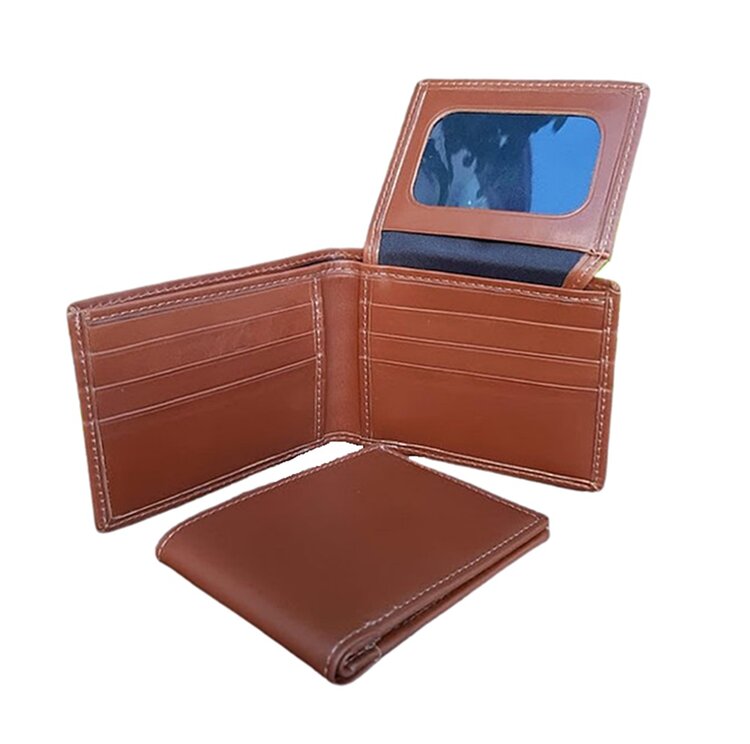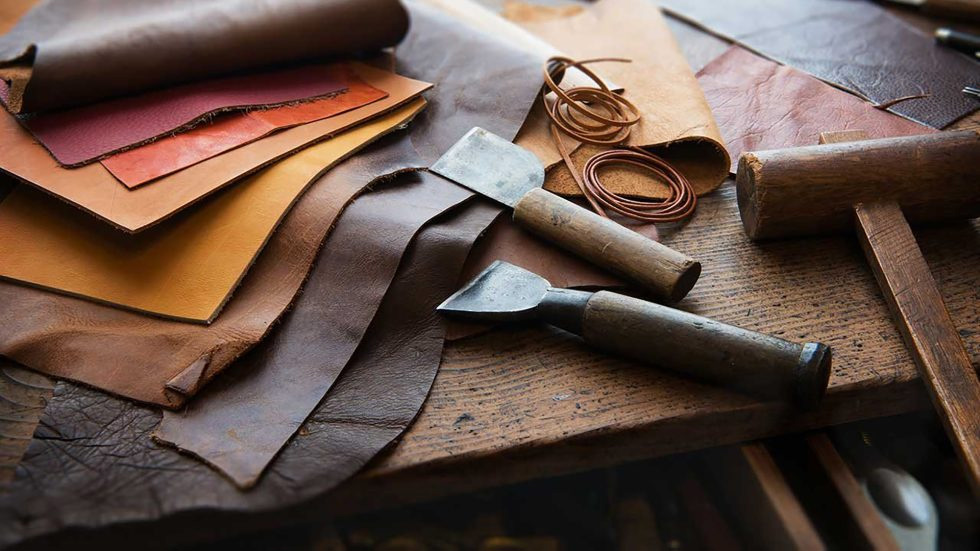Leather is one of the oldest and most versatile materials known to humankind. As a natural material, leather is derived from animal hides and undergoes various transformation processes in tanneries. Over time, various types of leather have emerged—from the heavily processed, tanned cowhide used in high-end fashion and durable goods to more traditional, untreated varieties. But what is rawhide leather? In this post, we will explore a clear rawhide leather definition and delve into its unique characteristics.
We’ll start by defining rawhide leather in its natural, untanned state, highlighting its historical significance and traditional applications. Next, we’ll compare it with other leather types—examining how rawhide differs from cowhide and tanned leather in terms of texture, durability, and overall appeal. Finally, we will discuss the distinct procurement process involved in sourcing rawhide leather compared to its tanned counterparts.
Whether you’re asking, “what is rawhide leather?” or simply curious about its benefits and production, this guide will provide you with an in-depth understanding of this unique material.
What Is Rawhide Leather?
Rawhide leather is a distinctive type of leather that remains in its natural, untanned state. The presence of hair follicles in rawhide leather contributes to its natural texture and appearance. Unlike its more processed counterparts, rawhide is derived directly from animal hides without undergoing the tanning process. This gives it a unique set of properties and an authentic, rustic appearance that has been prized for centuries.
Rawhide Leather Definition
Rawhide leather refers to animal skin that has been cleaned, dried, and sometimes oiled, but not tanned. Rawhide leather can consist of several layers of animal hide, each possessing unique qualities. Without the chemical treatments used in tanning, rawhide maintains a firmer and stiffer texture. This untreated quality makes it ideal for applications where durability and a natural finish are desired.

Historical Significance and Traditional Uses
Historically, rawhide leather was widely used for making items such as drum heads, horse reins, saddles, and even as protective armor in various cultures. Natural imperfections like insect bites are valued in traditional crafts, as they signify high quality and authenticity. Its strength and natural resilience have ensured its continued popularity in traditional crafts and artisanal products. Even today, rawhide is valued in applications that require a natural look and a robust material.
Characteristics of Rawhide Leather
- Natural and Untreated: Retains the original texture and appearance of the animal hide. Rawhide leather is a form of natural leather, known for its superior properties and quality compared to artificial leather.
- Stiff and Durable: Due to the absence of tanning chemicals, rawhide tends to be firmer and more rigid.
- Unique Aesthetic: Offers a rustic, authentic look that stands out from the smoother finish of tanned leather.
By understanding what rawhide leather is and its historical context, you can better appreciate its unique qualities and the reasons it remains a sought-after material in both traditional and contemporary design.
How Is Rawhide Leather Made?
Rawhide leather production is a time-honored craft that relies on traditional methods passed down through generations. Addressing quality issues during the production process is crucial to ensure the durability and overall quality of the leather. The process emphasizes minimal chemical intervention, allowing the natural properties of the hide to shine through.
Traditional Rawhide Processing Methods
Traditional rawhide processing involves a series of careful steps that preserve the hide’s natural texture and strength. Rawhide lacing is often used in traditional crafts, such as snowshoes, where it tightens and enhances the structural strength as it dries. Unlike modern tanned leather, which uses chemical baths to stabilize the material, rawhide production relies on natural techniques such as air drying and oiling. This approach results in a firmer, more rigid leather that retains its original, untanned character.
Step-by-Step Rawhide Leather Production Process
- Selection and Cleaning – The process begins with selecting high-quality animal hides. Once chosen, the hides are thoroughly cleaned to remove any dirt, blood, or residual tissue.
In contrast to rawhide, grain leather undergoes additional processing to remove imperfections and achieve a specific appearance. This can include full grain, top grain, and corrected grain leather, each with unique characteristics and common uses.
- Soaking and Liming – The cleaned hides are then soaked in water to rehydrate them. In some traditional processes, a lime solution may be used briefly to help remove hair and unwanted proteins without fully tanning the hide.
- Scraping – After soaking, the hides are scraped to remove any remaining flesh and fat. This step is critical to ensure a clean surface, which contributes to the final product’s durability.
- Drying – Once scraped, the hides are stretched and left to air dry slowly in a controlled environment. This slow drying process helps maintain the hide’s natural structure and results in a stiffer material compared to tanned leather.
- Oiling and Finishing – To enhance flexibility and prevent brittleness, natural oils may be applied. The leather is then left to cure, developing its characteristic firm yet durable texture.
Comparison with Tanned Leather Production
While rawhide leather production relies on natural drying and minimal chemical use, tanned leather undergoes an extensive chemical treatment process:
- Chemical Tanning:
Tanned leather is immersed in tanning agents (like chromium salts or vegetable tannins) to stabilize the hide, resulting in a softer, more pliable product. - Controlled Softening:
Tanning involves controlled processes to achieve a consistent texture and color, often sacrificing some of the natural rigidity found in rawhide. - Durability vs. Flexibility:
Rawhide leather retains its natural rigidity and durability, making it ideal for items that require a stiff, robust material, whereas tanned leather is preferred for its flexibility and ease of use in garments and accessories.
By understanding these differences, you can appreciate the distinct qualities of rawhide leather—crafted through traditional rawhide processing methods—and why it remains a valued material in various artisanal and functional applications.
Rawhide Leather vs. Cowhide and Tanned Leather
When deciding between rawhide leather, standard cowhide, and tanned leather, it’s important to understand the differences in texture, appearance, and durability. Genuine leather, often perceived as lower quality, is made from the less desirable parts of the hide and is misleadingly marketed as high-quality. Below is a detailed comparison that highlights these aspects, along with the benefits and drawbacks of each type.
Texture and Appearance
Rawhide Leather
- Texture:
Rawhide leather is noticeably stiffer and more rigid. Since it remains untanned, it retains a natural, grainy texture that exudes a rustic and authentic character. - Appearance:
Its look is organic and less uniform, often showcasing natural markings and imperfections that contribute to its traditional aesthetic.

Tanned Cowhide and Full Grain Leather
- Texture:
Tanned cowhide undergoes chemical treatments that soften and stabilize the hide, resulting in a smoother, more pliable material. - Appearance:
This process produces a more uniform and refined finish, which is ideal for fashion items, accessories, and other consumer products that demand consistency and a polished look.
Standard (Untreated) Cowhide
- Texture:
Untreated cowhide typically retains much of its natural rigidity, similar to rawhide. However, most cowhide used in products is tanned to enhance its workability. - Appearance:
In its raw state, cowhide can appear very natural and textured, though it is less commonly seen in consumer products compared to tanned versions.
Durability and Functionality
Rawhide Leather
- Durability:
Rawhide’s natural stiffness contributes to exceptional durability, making it ideal for applications where a firm, robust material is needed (such as drum heads, saddles, and protective gear). - Functionality:
The rigidity that makes rawhide so durable can also be a limitation, as it offers less flexibility for everyday wear or applications that require a softer feel.
Tanned Cowhide
- Durability:
Tanning enhances cowhide’s resistance to wear, water, and environmental factors, striking a balance between durability and flexibility. - Functionality:
Its softened, pliable nature makes tanned cowhide highly versatile, suitable for clothing, bags, and various accessories that require both strength and suppleness.
Benefits and Drawbacks
Rawhide Leather
- Benefits:
- Maintains a natural, untanned look and feel that appeals to traditional and artisanal applications.
- Offers exceptional strength and durability, perfect for items that demand structural integrity.
- Drawbacks:
- Its rigidity limits flexibility, reducing its suitability for products requiring a softer, more adaptable material.
- Requires specialized care due to the absence of chemical treatments that stabilize the hide.
Tanned Cowhide
- Benefits:
- Provides a soft, uniform appearance with enhanced flexibility, ideal for a wide range of consumer products.
- Chemical stabilization makes it more resistant to environmental wear and tear.
- Drawbacks:
- The tanning process may diminish the natural character and authenticity of the hide.
- There are potential environmental concerns related to the chemical treatments used in tanning.
Understanding the difference between rawhide and cowhide, as well as rawhide vs. tanned cowhide (or untanned leather vs. tanned leather), is crucial when choosing the right type of leather. Each option has its own unique attributes: rawhide stands out for its traditional, untanned qualities, while tanned leather offers a more versatile, consumer-friendly product suitable for a wide range of applications.
Procurement of Rawhide Leather
Sourcing rawhide leather, particularly in Argentina, follows a distinct process compared to sourcing tanned cowhide. Different types of rawhides, including elk, bovine, buffalo, and goatskin, are sourced for their unique characteristics and applications. Argentina is renowned for its high-quality hides, and the rawhide leather procurement process emphasizes minimal chemical intervention, preserving the natural characteristics of the hide.
Sourcing Rawhide Leather in Argentina
Argentina’s leather industry benefits from a rich agricultural heritage and strict quality controls. When sourcing rawhide leather in Argentina, buyers often work directly with local farmers and specialized tanneries that focus on traditional methods. Unlike tanned cowhide—which is treated with chemicals to achieve a softer, more uniform finish—rawhide is kept in its natural, untanned state. This means the procurement process values raw, minimally processed hides that reflect the true quality and heritage of the product.
Procurement Process and Ethical Considerations
The procurement process for rawhide leather typically begins with selecting high-quality hides from reputable sources. This involves:
- Direct Sourcing: Establishing relationships with local livestock producers who adhere to sustainable practices.
- Inspection and Grading: Hides are inspected for natural markings, thickness, and overall condition to ensure they meet specific quality standards.
- Traditional Processing: The selected hides undergo minimal processing—cleaning, scraping, and air drying—without the use of chemical tanning agents.
Ethical sourcing of rawhide leather is a key consideration. Buyers increasingly demand transparency in animal welfare practices and sustainability. Working closely with Argentine suppliers often allows for better oversight of farming practices and ensures that the rawhide leather is produced in a responsible, environmentally friendly manner.
Environmental Impact
The environmental impact of rawhide leather versus tanned leather is notable. Because rawhide leather is produced without chemical tanning agents, it generally has a lower ecological footprint. The traditional processing methods reduce chemical waste and energy consumption, making it a more sustainable choice. In contrast, tanned leather production involves chemicals that may contribute to pollution and require additional measures for waste management.
By focusing on ethical and sustainable procurement practices—such as sourcing rawhide leather in Argentina and employing traditional processing techniques—businesses can offer products that not only maintain the natural integrity of the leather but also support environmentally responsible practices.
Uses and Benefits of Rawhide Leather
Rawhide leather is a versatile material with a range of applications that showcase its unique characteristics. It is commonly used to create various leather goods such as wallets, belts, and bags, each benefiting from the material’s durability and aesthetic appeal. Its natural, untanned quality lends an authentic, rustic feel to various products, making it a favorite among traditional craftsmen, fashion designers, and interior decorators.
Common Uses of Rawhide Leather, Including Dog Chews
- Traditional Crafts:
Rawhide leather is often used in the creation of traditional items such as drum heads, saddles, and horse reins. Its durability and natural texture make it ideal for handcrafted artifacts and artisanal products. - Fashion and Accessories:
Designers incorporate rawhide into belts, bags, shoes, and jewelry to add a distinct, organic aesthetic. The rugged appearance and natural patterns of rawhide can elevate fashion pieces with a unique touch. - Home Decor:
From rustic wall hangings to custom furniture accents, rawhide leather is popular in interior design. Its authentic look enhances the decor of spaces aiming for a vintage or bohemian style.
Benefits of Using Rawhide Leather Over Tanned Leather
- Natural Aesthetic:
Rawhide retains the natural grain and texture of the animal hide, offering an organic look that is often lost during chemical tanning. - Enhanced Durability:
Thanks to its minimal processing, rawhide leather maintains its inherent strength and rigidity, making it highly durable for applications that require robust materials. - Eco-Friendly Production:
The traditional processing of rawhide avoids chemical tanning agents, reducing the environmental footprint compared to tanned leather. - Unique Character:
Every piece of rawhide leather is distinct, with natural markings and variations that add to its charm and authenticity.
Rawhide Leather Care and Maintenance Tips
- Regular Cleaning:
Gently brush off dust and debris using a soft brush or cloth. For deeper cleaning, use a slightly damp cloth, ensuring the leather is not soaked. - Avoid Excess Moisture:
Rawhide should be kept dry; if it becomes wet, allow it to air-dry naturally away from direct heat to prevent cracking. - Use Natural Oils:
Occasionally applying a natural oil (like neatsfoot oil) can help maintain flexibility and prevent the leather from drying out, but avoid over-oiling as this can alter its texture. - Proper Storage:
Store rawhide leather items in a cool, dry place away from direct sunlight. Use breathable covers to protect the material while allowing air circulation. - Handle with Care:
Due to its untreated nature, rawhide is more susceptible to stains and physical damage. Handle items gently and consider using protective finishes if the product is meant for frequent use.
By understanding the diverse uses of rawhide leather, recognizing the benefits of rawhide leather over its tanned counterparts, and following proper rawhide leather care and maintenance practices, you can ensure that your rawhide products remain both beautiful and durable for years to come.
Rawhide leather is a unique, untanned material that preserves the natural texture and strength of the animal hide. Unlike tanned leather, rawhide is processed using traditional methods that emphasize minimal chemical intervention, resulting in a material that is both robust and eco-friendly. Its distinct characteristics make it ideal for traditional crafts, fashion accessories, and home decor, offering a rustic aesthetic and unmatched durability.
When choosing leather for your next project or purchase, consider the unique qualities that rawhide offers. Its natural, untreated appearance and strength set it apart from tanned cowhide, providing a timeless and authentic look. If you value sustainability and distinctive character, rawhide leather might be the perfect choice for you.
Explore Pieces of Argentina’s premium selection of rawhide leather products today or contact us for more information. Let us help you find the perfect rawhide piece that not only meets your needs but also tells a story of tradition and quality.
FAQs
What is rawhide leather?
Rawhide leather is an untanned animal hide that is cleaned, dried, and sometimes oiled without undergoing the chemical tanning process. This minimal processing preserves the natural texture, grain, and strength of the hide, resulting in a firm and durable material prized for its authenticity and rustic appearance.
How does rawhide leather differ from tanned cowhide?
Rawhide leather remains in its natural, untreated state, which gives it a stiffer and more rigid texture compared to tanned cowhide. In contrast, tanned cowhide is processed with chemicals—such as chromium salts or vegetable tannins—that soften and stabilize the hide, resulting in a more pliable and uniform finish. This difference means rawhide is often favored for traditional crafts and applications requiring durability, while tanned leather is popular in fashion and consumer products where flexibility and a smooth appearance are desired.
How is rawhide leather sourced and processed in Argentina?
Argentina is renowned for its high-quality animal hides. The sourcing process involves direct partnerships with local livestock producers who adhere to sustainable and ethical practices. Once high-quality hides are selected, traditional rawhide leather production methods are employed—this includes thorough cleaning, gentle scraping to remove residual flesh, and air drying the hide without chemical tanning. These steps ensure that the hide retains its natural properties while minimizing environmental impact compared to chemically tanned leather.
How do I maintain rawhide leather products?
Proper care and maintenance of rawhide leather are essential to preserve its unique qualities:
- Regular Cleaning: Gently brush off dust and debris with a soft cloth or brush. For deeper cleaning, use a slightly damp cloth—avoiding excessive moisture.
- Avoid Overexposure to Moisture: Keep rawhide dry; if it gets wet, let it air-dry naturally away from direct heat.
- Apply Natural Oils Sparingly: Occasionally use natural oils (such as neatsfoot oil) to maintain flexibility and prevent cracking, but avoid over-oiling.
- Proper Storage: Store rawhide items in a cool, dry place with good air circulation, and avoid direct sunlight to prevent fading and brittleness.
- Handle with Care: Since rawhide is untanned and can be more sensitive to wear, handle products gently and avoid heavy abrasion.
To see quality Argentine leather products CLICK HERE
